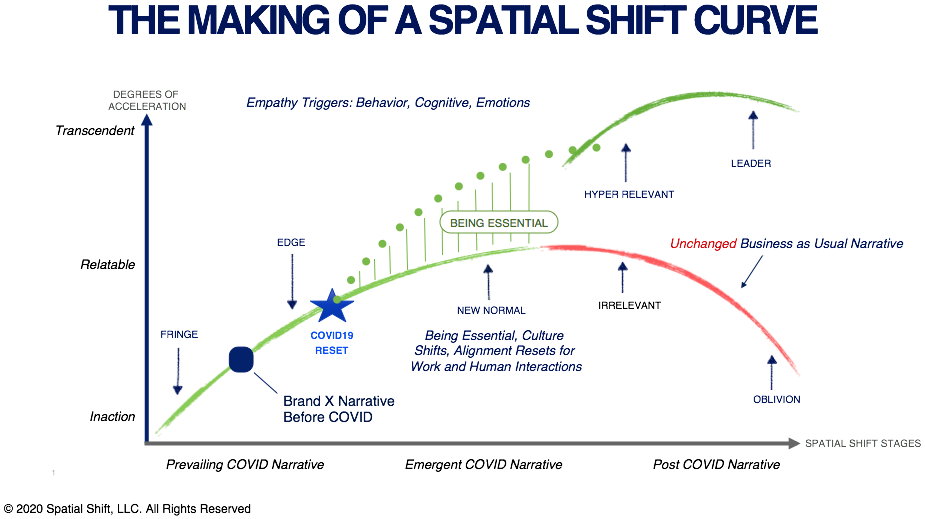starts when you have a black swan moment like COVID-19. What you once knew to be true and considered a comfort zone is now all in question. The prevailing narrative is now disrupted. The idea of business, as usual, is now an unknown. Today’s OKR is no longer on point. The metric du jour is irrelevant.
“In economic life and history more generally, just about everything of consequence comes from black swans; ordinary events have paltry effects in the long term.” ~Nassim Nicholas Taleb, The Black Swan: The Impact of the Highly Improbable.
As noted by many, our primitive brain is geared to a flight or fright cognition. Our displacement is disorienting. Our quarantine is forcing us to revisit Maslow’s hierarchy back to its fundamental basic needs of food, warmth, water, rest, safety and security.
How do we make sense of this moment? How do we reconcile that we are in a massive shift, now all at once? Is this a blip or a trigger for change? Will we come out of the other side fully intact or altered from our previous state of mind?
I have been thinking about this moment for a long time. Like everyone else, I did not see our lives being disrupted by an invisible enemy. An enemy that defies race, creed, color, sex, title, gender, politics, wealth and or stature as well as borders. This pandemic has forced me to become a student again. I see corollaries between tech, connectivity and a virus. A new topography has arrived.
I have become fascinated by contagion and its mathematical patterns. By behavior economics and how we are reacting or responding as a society, corporation, organization, government, and individual. Like an out of body experience or a movie scene in slow motion. Tom Clancy’s Rainbow Six pops into my head. Sci-fi movies are being recalled from deeper memory files.
I see the making of a new S curve that I am calling a Spatial Shift Curve.
The New Spatial Shift Curve
I see things in narrative thinking. Narratives help us to make sense of things. Narratives are powerful shapers of how people think, behave and act. In a moment of complete disruption, one can either react or respond to the situation.
I believe we are fundamentally in a reset. The actions taken by governments and leaders across the globe are literally unprecedented. Even by world war standards. We are, rather we agree or not, interconnected by a common thread.
The current thread is what I call “being essential”. Our temporary boundaries are now set by the definition of being essential. If you are not essential, you are scrambling to become essential or to remain essential. Everything you did prior to COVID 19 is now open for a new decision.
How you show up in the moment of being essential may shape the curve you now find yourself surfing. How you respond to this Spatial Shift over the next several months may begin your next curve or see you migrate towards oblivion.
The New Spatial Shift Curve
I have jumped into global virtual conferences with a fury. Mostly to accelerate my learning and to see how others are responding to the moment. It is messy, experimental. But, I also see the evolution of tremendous human qualities rising to the surface — we are being allowed to be vulnerable. We are all on a similar learning curve — all at once. We are creating on the fly. We are pulling together to solve a common problem.
Several companies are resetting their agenda and setting aside their primary business practices to contribute to the greater good. New companies that were on the fringe or edge of adoption are now acting as “accelerants” of change. Many more companies will show up on the “being essential” portion of the Spatial Curve.
Some organizations will react and show their true colors in a manner that will not be acceptable to the emergent narrative of the Spatial Shift. The individuals impacted by these reactions will recover and remember. And, those who are watching, who also fear for their own wellbeing will also remember.
The transactional mindset of business today is paused for doing the right thing in the moment of need. Are your values, typically deemed as corporate wallpaper and nice posters, showing up in your actions? What is your purpose, if your employees, culture, and customers don’t align with your actions? The cliche of actions speaks louder than words is now front and center.
How will you show up? Are you essential?





